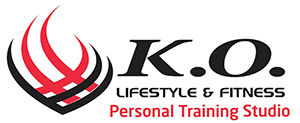Back Pain And The Benefits Of Exercise
Statistics show that up to 85% Australians will experience some form of back pain during their lives . Therefore, most of us will know that back pain can be an inconvenience at best and incredibly painful at worst. Lower back pain has become the most common cause of disability in people under the age of 45, and the most expensive healthcare problem in those aged between 20 and 50 .
There are a number of contributors that may predispose an individual to the onset of back pain including anatomy, lifestyle, psychological, social and genetic factors. The combination of these factors will determine the level of pain experienced, movement and daily behaviours and coping strategies. The pain may present as an acute injury, or in absence of any tissue damage.
Back pain may lead to a fear around participating in particular activities, such as exercise., with the risk of potential harm outweighing the benefits. Whilst it may sound counterintuitive, a structured exercise program can help relieve symptoms of back pain by restoring regular movement patterns and behaviours, strengthening affected areas and encouraging regeneration and healing of any damaged structures.
“We see a large number of people here at KO who experience back pain. It’s fantastic that people are starting to understand that regular structured exercise is really beneficial to helping them manage their pain. It is important to seek advice from an exercise professional first to make sure you are exercising safely and in a way that is going to help, not make things worse”.
An ideal exercise program for the management of back pain incorporates strengthening and stretching the low back, abdominals and the lower body muscles, as well as regular aerobic conditioning. Aerobic exercises including walking, swimming and cycling are all perfect for someone experiencing back pain as they allow movement through the affected areas, while reducing the impact and stress that may otherwise occur during activities such as running.
Low impact exercises such as resistance training, light aerobic conditioning and flexibility training are all not only great for improving general fitness, but stimulate a release in endorphins, which help to suppress feelings of pain. Exercise also encourages increased blood flow, increasing the supply of oxygen, fluid and nutrients to a an injured area, helping them to regenerate and heal.
Maintaining strength through the lower back, abdominals and gluteals is essential for managing back pain symptoms. Without a strong midline corefoundation, there is greater chance of increased stresses being placed upon the lumbar spine and pelvis. These muscles are also associated with posture and should be highly considered when treating back pain conditions. Benefits of strength training include normalising movement patterns and posture, increasing muscle tone, teaching proper body mechanics and reducing the likelihood of future back injuries.
Flexibility should also be maintained throughout the treatment process, ensuring tight or inhibited muscles are appropriately stretched to allow their opposing muscles to strengthen accordingly. Stretching is also essential for maintaining mobility- something that is vital for keeping active as we age.
“We regularly see people who have recurring back issues as they have not had the right management plan for their injury in the past. Our exercise physiologists are all university qualified in the treatment and management of back pain conditions and are able to determine the exercises that are going to be right for you to best manage YOUR pain”.
It is important to remember that exercise is not a “one size fits all” approach. Factors such as back pain diagnosis, fitness levels and personal goals and preferences are all considered when designing an exercise individual program.
A qualified exercise physiologist will assess your symptoms and presentation before creating a personalised exercise program. An individualised, structured exercise program will lead to long term benefits including the management and treatment of back pain. KO Lifestyle and Fitness’s team of Personal Trainers and Exercise Physiologists can tailor a program that is specific to you, your lifestyle and your back pain symptoms.
To find out more or book an appointment below
